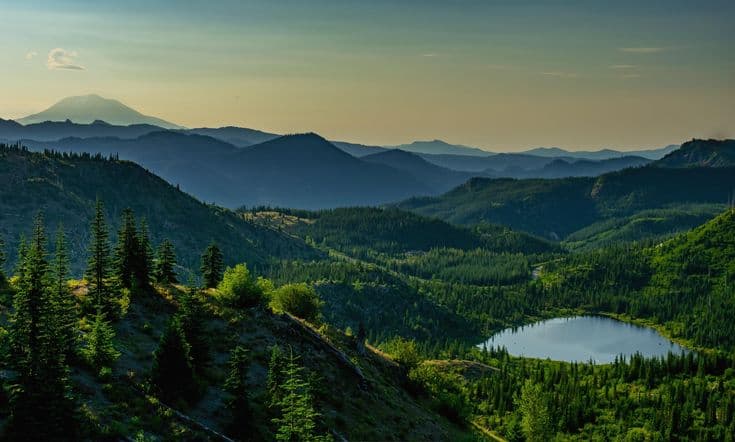Explore Earth's Ecosystems
Understand their beauty, balance, and the urgency to protect them.
What Is an Ecosystem?
Ecosystems can be vast, like a desert or an ocean, or small, like a pond or a fallen log. Each component plays a role, from the smallest bacteria breaking down organic matter to the largest predators maintaining population balance. They provide essential services like clean air and water, pollination, and climate regulation.
For example, in a coral reef, the corals provide structure, algae provide food through photosynthesis, fish graze on algae and are prey for larger fish, and the water provides nutrients and a medium for life.
Ecosystems are intricate networks of life and environment in balance.
The Web of Life: Interdependence
Damage to one ecosystem can have cascading effects across the globe. Understanding these connections highlights the need for holistic conservation efforts.
Forests & Rainfall
Tropical forests influence regional and even global rainfall patterns, crucial for agriculture far beyond their borders.
Oceans & Climate
Ocean currents like the Gulf Stream regulate temperatures, making distant lands habitable. Oceans absorb vast amounts of CO2.
Wetlands & Water Quality
Wetlands act as natural filters, purifying water that flows into rivers and seas, benefiting downstream ecosystems and human water sources.
The health of local ecosystems contributes to the overall well-being of our planet.
Ecosystem Gallery

Quick Facts:
- Biodiversity: Extremely High (e.g., Amazon rainforest hosts millions of species)
- Climate: Varies: Tropical, Temperate, Boreal
- Area: Approx. 4.06 billion hectares globally (FAO 2020)
Key Challenges:
Deforestation (agriculture, logging), Wildfires (climate change induced), Habitat Fragmentation, Invasive Species.
Learn more through dedicated resources and research.

Quick Facts:
- Biodiversity: Vast (from plankton to whales), much still undiscovered
- Climate: Major global climate regulator
- Area: Approx. 361 million sq km (71% of Earth's surface)
Key Challenges:
Plastic Pollution, Overfishing, Ocean Acidification, Coral Bleaching, Dead Zones.
Learn more through dedicated resources and research.

Quick Facts:
- Biodiversity: Specialized (e.g., Polar Bears, Penguins, Seals, Krill)
- Climate: Extreme Cold; critical for global climate regulation (albedo effect)
- Area: Arctic: ~14 million sq km; Antarctic: ~14 million sq km (continent)
Key Challenges:
Rapid Ice Melt (sea ice & glaciers), Sea Level Rise Contribution, Permafrost Thaw, Threats to Specialized Wildlife, Geopolitical Resource Competition.
Learn more through dedicated resources and research.

Quick Facts:
- Biodiversity: Moderate to High (grazing mammals, birds, insects)
- Climate: Temperate or Tropical; seasonal rainfall
- Area: Historically ~40% of land, much converted to agriculture
Key Challenges:
Conversion to Agriculture, Overgrazing, Desertification, Fire Suppression/Alteration, Invasive Species.
Learn more through dedicated resources and research.

Quick Facts:
- Biodiversity: Very High (critical for birds, fish, amphibians)
- Climate: Varies; found in diverse climatic zones
- Area: Declining rapidly; cover ~6% of Earth's land surface
Key Challenges:
Drainage for Agriculture/Development, Pollution (run-off), Water Diversion, Invasive Species, Sea Level Rise (coastal wetlands).
Learn more through dedicated resources and research.

Quick Facts:
- Biodiversity: Specialized and surprisingly diverse (reptiles, insects, resilient plants)
- Climate: Arid to Hyper-Arid; extreme temperature fluctuations
- Area: Cover ~20% of Earth's land surface
Key Challenges:
Desertification (expansion due to land degradation), Water Scarcity (over-extraction of groundwater), Habitat Degradation (off-road vehicles, development), Climate Change (increased aridity).
Learn more through dedicated resources and research.
Global Threats to Ecosystems
Driven by greenhouse gas emissions, causing rising temperatures, sea-level rise, and extreme weather, impacting all ecosystems.
Clearing forests for agriculture, urbanization, and logging, leading to biodiversity loss and reduced carbon sequestration.
Contamination of air, water, and soil by plastics, chemicals, and industrial waste, harming wildlife and human health.
The decline in the variety of life forms within an ecosystem, often driven by habitat destruction, climate change, and overexploitation.
Explore specific Environmental Challenges for more detailed information on these threats.
Take Action: Get Involved
Continue Your Exploration
Detailed information for each ecosystem can be found by expanding the 'Detailed Overview' and 'Conservation Insights' sections within their respective cards in the Ecosystem Gallery.
Consider exploring related topics on our platform, such as Environmental Challenges which often directly impact these ecosystems, or Sustainable Practices that can help mitigate threats. Our Resources page also offers links to external organizations and data.